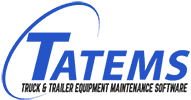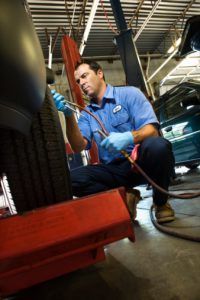Preventative Maintenance Is A Top Fleet Priority
If you were to ask any fleet manager about their number one priority when it comes to fleet maintenance, many will tell you that PM or preventative maintenance tops the charts. A survey conducted by Arsenault Associates, Inc. shows that preventative maintenance is the main concern of trucking companies, at least those who are currently using fleet maintenance software for fleet maintenance.
“According to Arsenault, preventive maintenance (PM) scheduling is the main priority of trucking companies that use maintenance management software. It states that 36 percent of respondents conduct PM for expense management.”
The importance of preventative maintenance can simply not be overlooked. Studies show that less than 44 percent of fleets are currently using software programs that are specifically designed for fleet maintenance. Some do use software programs, but not those that are designed specifically for these tasks. Word, Excel and others can only offer so much. The only software that is capable of automating preventative maintenance scheduling are those that are designed specifically for this purpose.
“‘Trying to manage a fleet using less technology is like settling to ‘not lose too much money.' In this troubled economic environment, that just won't do,' Arsenault commented.”
Organizations should focus on the big picture. Choosing a fleet management software program that meets the companies' needs will allow managers to ensure smoother operations. One of the key areas where these programs can help is with cost. Companies that choose a preventative maintenance program may spend a bit more on maintenance but they will come out on the better end in the long run.
Many companies feel that maintenance may get in the way of their operation. Some may feel that lost sales or delivery schedules could cause a profit decrease. Others may argue that they will lose sales to their competitors if they cannot meet their specific delivery schedules. Of course, the cost for towing in vehicles that are broken down or paying fines related to maintenance issues could cost much more in the long run than these minor interruptions. Not maintaining vehicles could mean paying hefty tow bills when those vehicles do break down. This is a particular concern for companies with larger trucks in their fleet.
“‘With a car fleet, you can easily go out and rent a car,' he said. ‘With a work truck, you can't necessarily run out and rent another truck. You've got inventory, tools, and the upfit. It knocks the vehicle out of service.'”
So what exactly is a fleet manager to do? Many experts recommend a strategic program for fleet maintenance. Ensuring that preventative maintenance is done and is done regularly will help to lower the costs associated with broken down vehicles and those associated with fines. Software programs that are designed to help with preventative maintenance schedules can be purchased from a number of companies and they offer varying benefits.
The best rule of thumb is for fleet managers to spend some time getting acquainted with these programs and choosing one that will meet the operation's specific needs. While there are a number of programs available, not all are alike so managers will need to spend time learning more about the software and how it works.
Preventative maintenance is of course, only one consideration when it comes to a fleet but it is an important one. Most fleet managers will say that they are more concerned about PM than they are about cost, alternative fuel sources and many other issues facing fleets today. Fleet maintenance software programs are designed to help ease the mind of managers when it comes to routine maintenance and keeping their fleet on the road.
Fleet Maintenance And The CSA Challenge
An analysis of the Maintenance BASIC under the Compliance, Safety and Accountability program from the Federal Motor Carrier Safety Administration showed that a high number of violations are caused by requirements regarding reflective lighting. Broken lamps are another problem for many fleet managers along with wheel part repairs and chafed brake hoses.
“Seventy to 75 percent of all CSA points can be traced back to maintenance or unsafe driving violations”.
In the past, many of these issues may have been overlooked. Drivers and managers would simply have decided that while the issues were in need of repair, they were not extensive enough to actually shut down the fleet. Today however, these are issues that are commonly repaired right away because the points will count against the fleet and could possibly cause a major shutdown of operations.
Larger problems were typically always repaired right away but minor issues would have been overlooked simply because they were costly or time consuming and because they did not threaten the operation, they could be put off for a later time. Today however, the CSA looks at everything that could possibly cause an issue and ensures that managers are focusing on all aspects of operating their fleets.
Many organizations are learning that in order to comply properly with CSA standards, a pre-trip and a post-trip inspection are needed by the driver. Everyone in the organization should be focusing on CSA requirements
in order to ensure that the operation remains on track. This includes every operation that uses trucks.
“The most important thing to note with CSA is that if your business is using trucks, you are subject to it,” stresses Stephen Keppler, executive director of the Greenbelt, Md.-based Commercial Vehicle Safety Alliance (CVSA), an international not-for-profit organization composed of local, state, provincial, territorial and federal motor carrier safety officials and industry representatives from the United States, Canada and Mexico”.
Historically, he says, a lot of refuse businesses did not really think of themselves as trucking companies; trucks were just one of many tools to collect trash and recyclables. Under CSA, they no longer have that luxury. Any business operating commercial trucks is going to be captured within this new safety net.
“On top of that, CSA uses real-time data generated from roadside inspections to put together its fleet safety ratings,” says Keppler. That means things like maintenance defects and out-of-adjustment brakes will find their way into in the public eye a lot faster than most fleets realize.
The CSA began in 2010 and since that time, the trucking industry has seen a dramatic reduction in violations, more so than in the last 10 years combined. Driver violations are down by more than 15 percent and roadside inspection violations are down by almost 14 percent. These numbers may continue in a positive direction as more and more fleet management programs are implemented by various companies.
“FCMSA's number one goal is safety: We want to ensure that every trip is a safe trip every time. And we think CSA is bridging multiple worlds in that process. And the nation's fleet maintenance professionals deserve a lot of credit for that; making older equipment work safely while learning to understand and use new technology in pursuit of low CSA scores and consistent safe vehicle operation.”
The integration of regulations by the CSA has required a number of changes within many organizations. Poor performers have been replaced and this covers every base from technicians and drivers to entire fleets. Even law enforcement officers who are tasked with carrying out vehicle and driver inspections have begun to adhere more to CSA standards in an attempt to make the roadways safer for everyone.


